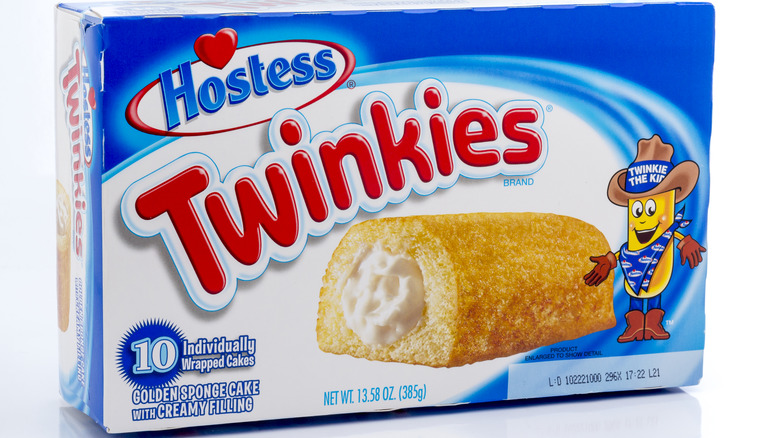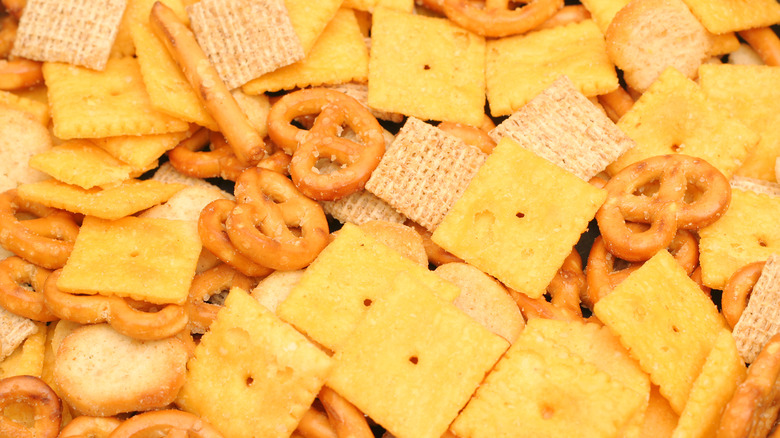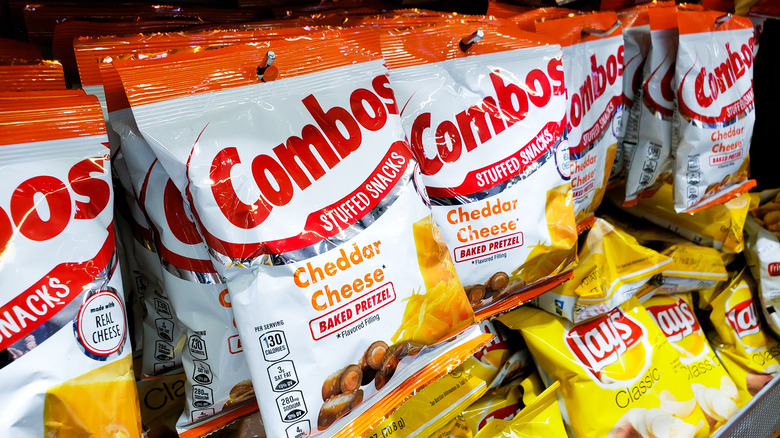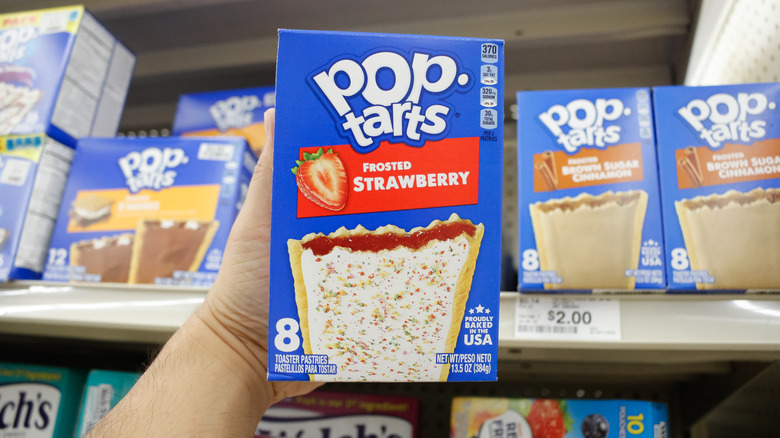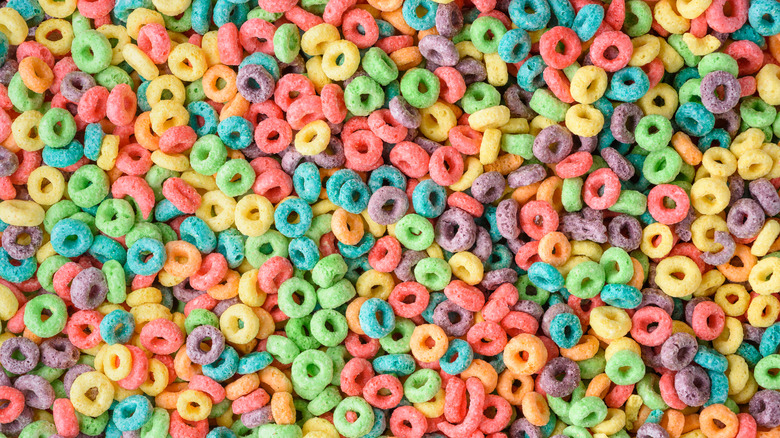5 Common Kids' Snacks That Are Actually Unhealthy - Exclusive
Every parent wants to feel their children are getting healthy and nutritious foods, but this is often easier said than done when it comes to snacks. Finding the right snacks for your kids can be difficult sometimes, especially if they're picky eaters. Not to mention, many of the snacks that kids tend to crave are not part of a healthy and well-balanced diet (via NPR). That's because many snack foods are full of artificial ingredients, excess calories, and sugar.
Even snacks that are advertised as healthy may contain ingredients that can increase kids' overall intake of calories and simple carbohydrates, leaving them feeling hungry. In fact, eating unhealthy snacks over more nutritious ones can end up decreasing the number of vitamins and minerals they consume on a daily basis. In an exclusive interview with Health Digest, Jamie Feit, MS, RD, and owner of Jamie Feit Nutrition, LLC tells us which common snack foods are unhealthy for kids and provides some healthier alternatives you can replace them with.
Twinkies
One common kids' snack that is neither nutritious nor healthy for children are Twinkies. Feit tells us that while Twinkies aren't as high in calories as other unhealthy snack foods, they are loaded with sugar and carbohydrates. She adds that a single serving contains 47 grams of carbohydrates, 32 of which come from added sugar. "The first ingredient listed on the label is sugar, meaning that most of the snack comes from sugar," Feit explains, noting that Twinkies also contain high fructose corn syrup, chemicals, preservatives, and animal fat made up of triglycerides.
"Considering the consumption of sugar and triglycerides are adding to the obesity epidemic and the rise of diabetes, that is why I would consider Twinkies are a very unhealthy snack," Feit says. In addition, Twinkies do not contain any fiber or protein, which are essential to a healthy and well-balanced diet. As a result, Feit recommends swapping out Twinkies for a much more nutritious snack, like Base Culture nutty pumpkin bread, which is made with all-natural ingredients and healthier alternatives to regular table sugar.
Frito-Lay munchies snack mix
Frito-Lay munchies snack mix is another common snack food that is very unhealthy for kids, Feit points out. Not only does it contain chemicals and polyunsaturated oils, but the size of the bag is also misleading for kids when it comes to the recommended serving size, she explains. Since the size of a single bag of Frito-Lay munchies snack mix is so small, it may mislead children and parents into thinking there is only one serving per bag.
According to Feit, however, "if you look at the label it actually contains 3 servings in that one small size bag." Because of this, a child may accidentally consume an entire bag of munchies mix, which contains 60 grams of fat, 162 grams of carbohydrates, and 1,920 milligrams of sodium, all of which exceed the daily recommended intake for these nutrients. "A healthy alternative for this snack mix would be a single serving snack bag of something healthy, such as Skinny Pop or Snacklins," Feit shares.
Combos stuffed pretzels
Combos stuffed pretzels are also not a great snack food option for kids. While the actual ingredients aren't too bad, it is loaded with carbohydrates. According to Feit, a single bag of Combos stuffed pretzels contains "enormous amounts of carbohydrates," which she refers to as a "carbohydrate overload." And much like the Frito-Lay munchies mix, the size of the Combos bag is also misleading.
"The package, which appears like a single serving, actually contains 6 servings, which is beyond deceiving," Feit explains. She adds that if a child were to eat an entire bag of Combos, they would be consuming more than 120 grams of carbohydrate, which would be the equivalent of eating 8 slices of bread. That's why she suggests giving kids snacks that contain much less simple carbohydrates and more protein. "A healthy alternative would be a 1-ounce package of nuts, homemade trail mixes, or a serving of whole grain crackers and cheese," she shares.
Pop-Tarts
In addition to Twinkies, Pop-Tarts are another snack that is chockfull of added sugar. In fact, consuming the serving size (2 toaster pastries), would give children a carbohydrate and sugar overload, Feit explains. That's because a single serving of Pop-Tarts contains 31 grams of sugar, 70 grams of carbs, and 370 calories. "The amount of added sugar in this pop tart serving is almost at the limit of what should be consumed daily," Feit says.
Feit tells us that for those on a 2,000-calorie diet, the daily recommended intake of added sugar is no more than 48 grams. "Additionally, these Pop-Tarts contain 4 different types of added sugar: corn syrup, high fructose corn syrup, dextrose, and sugar," she explains. "Kids need the right fuel to focus in school, learn, grow, and develop. This much sugar in one snack is a recipe for obesity and type 2 diabetes and many other nutrition-related problems." Because of this, Feit recommends swapping out Pop-Tarts for a healthy granola bar.
Sugar cereal snack pouches
Furthermore, Feit says that sugar cereal snack pouches are also among the worst and most unhealthy kids' snacks out there. That's because they are essentially devoid of any and all nutrients. "The sugar cereal snack pouches contain food dyes, sugar, and have basically no nutritional value," Feit explains. "This snack is made up of simple carbohydrates and carbohydrates with no fiber, protein, or fat." As a result, Feit says that sugar cereal pouches are a waste of calories.
If your child is craving a sweet treat, however, there are plenty of healthier alternatives to choose from. For instance, Feit suggests Greek yogurt, a single serving of freeze-dried fruit, a cheese stick, or even a piece of fruit with nut butter. These are all nutrient-dense foods that can give your kid energy and help them grow.
You can find out more about healthy eating at Feit's website, www.jamiefeitnutrition.com, or connect with her at Jamie@jamiefeitnutrition.com. You can also find her on Instagram, LinkedIn, or Facebook.


